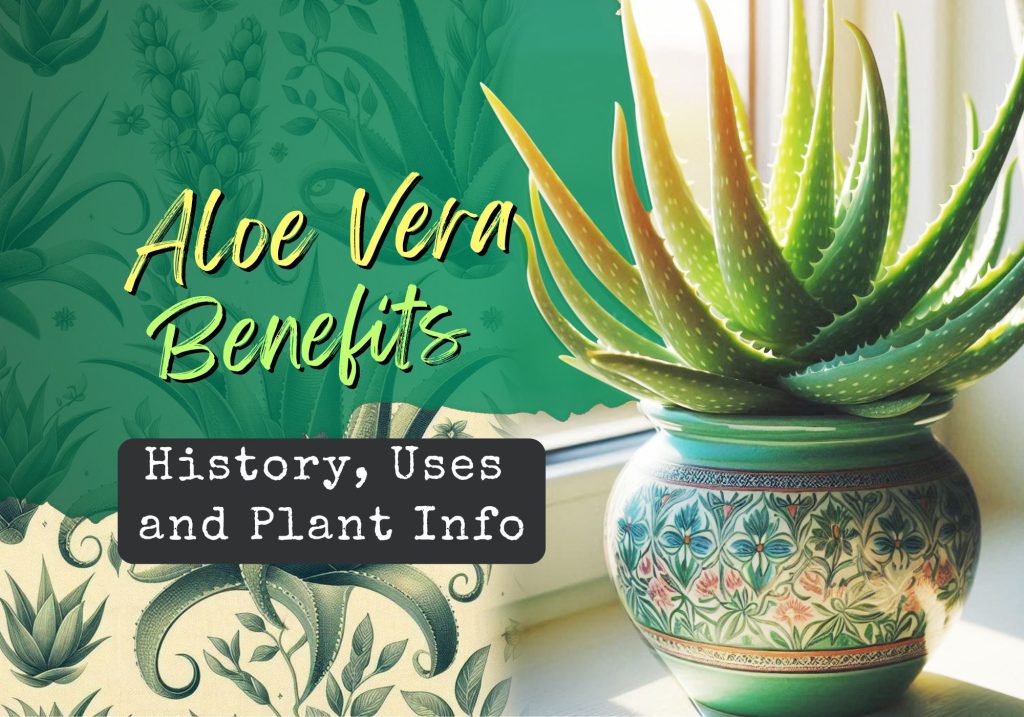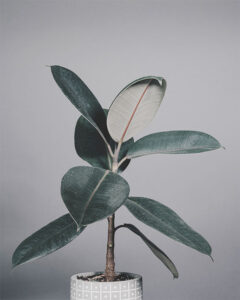Chapters:
- History and Uses
- What Is in Aloe Vera
- Plant Components and Uses
- The Aloe Vera Plant
- Aloe Vera Health Benefits
- When Not to Ingest
Aloe vera is known throughout history and in many cultures worldwide for topical and internal uses to treat, heal, protect, and rejuvenate the body. More than 200 active ingredients have been isolated from its inner gel. It is rich in anthraquinones, vitamins, minerals, enzymes, amino acids, natural sugars, and fatty acids. Topically, it can be used for many different applications: skin care, promoting anti-aging, and aiding in healing wounds and sunburns.
It’s commonly used in cosmetics and medicine as a purgative. Internally, it may be taken to combat gastrointestinal disorders, diabetes, sexual vitality and fertility issues, cancer, and mild fever. It also aids in improving organ functions, boosting the immune system, and improving blood and lymphatic circulation.
History and Uses of Aloe Vera in Traditional Medicine
The use of aloe vera as a medicine date back to ancient literature in many countries. Two thousand years ago, Greek scientists considered aloe vera a panacea. It has been used for many purposes long before and since the Roman era.
Ancient Rome: During the reign of Nero in the 1st century AD, the Greek physician and naturalist Pedanius Dioscorides journeyed with Roman armies in search of new healing methods. He wrote several books, his first titled De Materia Medica in 41-68 AD, teaching pharmaceutics, which included prescriptions and treatments for illnesses. He recommended the juice of aloe be used for numerous physical disorders such as wound treatment, gastrointestinal issues, gum disease, skin issues, and hair loss, to name a few. 1
Spanish Monks: In the 16th century, Spanish Jewish monks harvested and cultivated aloe where it was not previously grown. They became renowned as educated phytologists and healers. Christopher Columbus was known to have aloe vera growing in pots on his ship and used the gel to heal the wounds of his mercenaries. Aloe was carried to the Western Hemisphere by Spanish explorers to treat wounded soldiers.
During the Crusades, the Knights Templar created a drink of palm wine, aloe, and hemp and named it the ‘Elixir of Jerusalem’. They believed the drink extended their lives.
In the 17th century, the East India Trading Company purchased aloe from Socotra and Zanzibar. During this time, the West Indies sold aloe commercially to the European market. The Dutch also established aloe plantations in Barbados, Curacao, Aruba, and Bonaire.
In the 18th century, large amounts of aloe were being imported to be made into medicines. It is an important medicinal plant still used in many countries throughout the world, with its major application being to treat burns.
In Ayurveda, aloe is known as Kumari or ‘young girl’ because it is believed to bring back youthful energy and femininity. It’s used as a tonic for the female reproductive system. It is believed to tone all three Ayurveda constitutions: Vatta, Pitta, and Kapha.
Traditional Indian medicine uses aloe for constipation, skin diseases, worm infestations, and infections. It is said to have rejuvenating, alterative, purgative, and vulnerary actions. It’s used topically, usually in combination with licorice root, to treat eczema and psoriasis. Internally, it is used as a laxative, antihelminthic, hemorrhoid treatment, and uterine stimulant (menstrual regulator).
In Ancient China, aloe was seen as an important medical ingredient since the times of Marco Polo’s expeditions. The dried juice of the aloe is known as ‘Lu-hui’ and was first mentioned in the 11th century. In Japan, it was known as the ‘royal plant’ and the juice was consumed as an elixir or rubbed on the wounds of the samurai to heal them.
In Chinese medicine, the use of aloe’s skin and the inner lining of the leaves as a cold and bitter remedy is used to clear constipation due to the accumulation of heat (fire). The cool and moist gel is used in the treatment of fungal diseases. Chinese herbalists use aloe to expel worms, alleviate constipation, and normalize bowel movements.
Ancient Egyptians were the earliest known users of the aloe vera plant, dating back 6000 years. Aloe was useful in curing infections, treating skin problems, and as a laxative. It is said that Cleopatra and Nefertiti used and valued the juice as part of their daily beauty regimen.
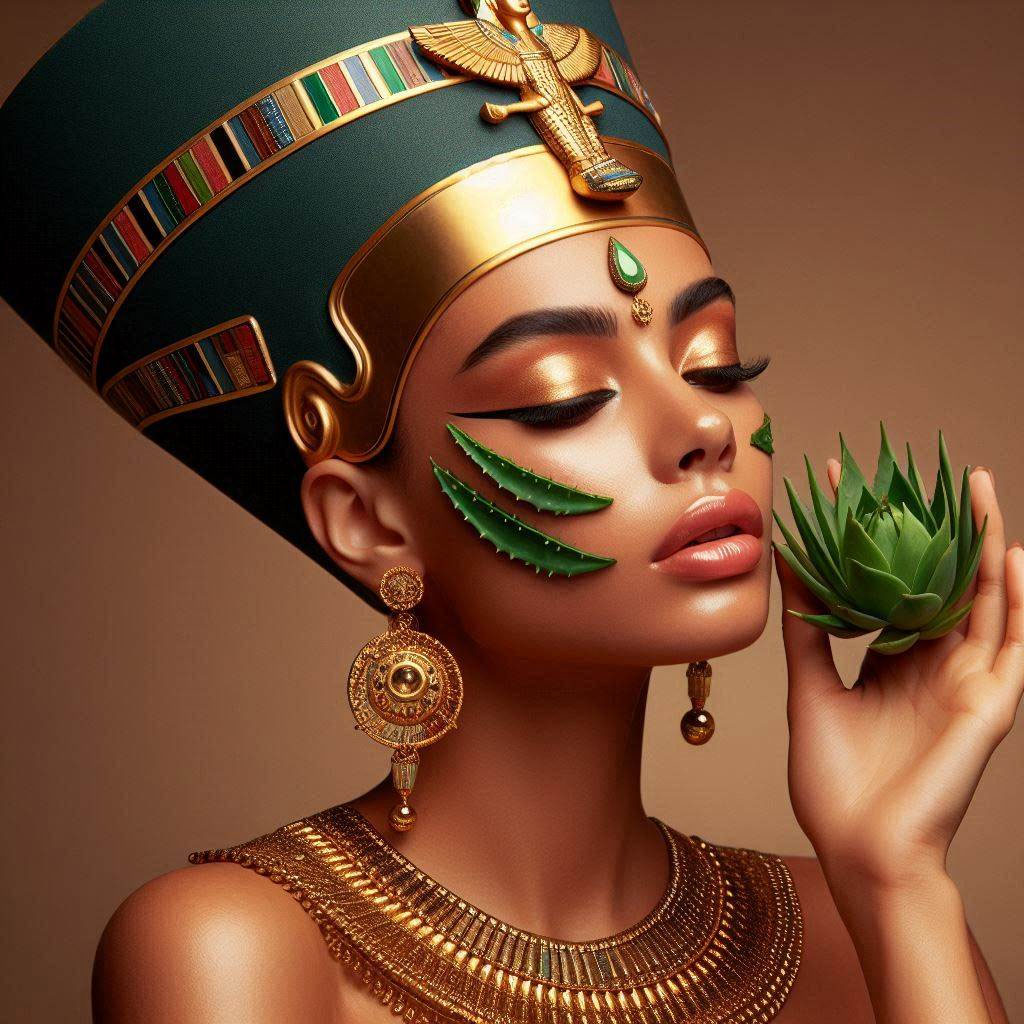
The dead were embalmed with aloe vera due to its antibacterial and antifungal properties, which delayed the decomposition process. A man’s wealth and esteem for the pharaoh were shown by the amount of aloe, in pounds, that he brought as an offering. They also used aloe in the production of papyrus and as a treatment for tuberculosis.
The Mahometans of Egypt thought of aloe as a religious symbol. They believed that the holy symbol of the plant hanging in a doorway would protect them from slander and evil influences.
The Ancient Mesopotamians used aloe as a body detoxifier. Illness was seen as demonic possession, and this divine plant used its powers to expel the ‘demons’.
In the time of Alexander the Great, aloe was also used as a medicinal treatment. He used aloe juice to heal the wounds of his warriors on the battlefield. He went to the effort of having transportable carts of the plant to have fresh supplies ready during battle campaigns. Aristotle convinced Alexander to capture the island of Socotra specifically to gain possession of the aloe groves there.
In Arabian medicine, the fresh gel is rubbed on the forehead as a headache remedy and rubbed on the body to cool down fever. It is also used for healing wounds, curing conjunctivitis, and as a disinfectant and laxative.
In Russia, it is used to treat cuts, scrapes, minor burns, cold sores, sunburns, and other types of skin inflammations.
In Western society, aloe vera is one of the few herbal medicines commonly used in the cosmetic, pharmaceutical, and food industries. It is also used therapeutically for topical and oral applications.
The 1820 U.S. Pharmacopeia officially listed aloe vera as a purgative and skin protectant. It was clinically used in the 1930s for the treatment of radiotherapy, skin burns, and mucous membranes.
It can also be added to foods such as yogurt and beverages (Japan), added to milk to treat kidney infections (Philippines), and added to curry in Tamil Nadu, India.
Information gathered from Source 1 and Source 2
What is in Aloe Vera?
Aloe vera is approximately 95% water, but the other 5% is made up of healthy enzymes. 1 Aloe is rich in anthraquinones, inorganic compounds, enzymes, vitamins, essential and non-essential amino acids, sugars, and other miscellaneous substances. Here is a more detailed analysis:
- Anthraquinones are analgesic, antibacterial, and antiviral aloe components. Some include aloin, barbaloin, isobarbaloin, anthranol, aloetic acid, ester of cinnamic acid, aloe-emodin, emodin, chrysophanic acid, and resistannol.
- Inorganic compounds are essential for the proper functioning of enzyme systems in different metabolic pathways. These include calcium, sodium, chlorine, manganese, zinc, chromium, potassium sorbate, copper, magnesium, iron, and selenium.
- Vitamins within aloe act as antioxidants and neutralize free radicals. These include vitamins A, C, B1, B2, B6, B12, choline, folic acid, α-tocopherol, and β-carotene.
- Enzymes help with the breakdown of food sugars and fats, aiding digestion and enhancing nutrient absorption. Bradykinase, which helps to reduce excessive inflammation, is one such enzyme.
- Essential amino acids provide the basic building blocks of proteins in the production of muscle, tissue, etc. These include lysine, threonine, valine, leucine, isoleucine, phenylalanine, and methionine.
- Non-essential amino acids also work similarly to essential amino acids as the basic building blocks of protein. These include histidine, arginine, hydroxyproline, aspartic acid, glutamic acid, proline, glycine, alanine, and tyrosine.
- Sugars in aloe are anti-inflammatory and antiviral. These components are glucose, galactose, mannose, L-rhamnose, aldopentose, glucuronic acid, cellulose, and C-glucosyl chromone.
- Fatty acids in aloe are anti-inflammatory, antiseptic, and analgesic. These include cholesterol, β-sitosterol, campestrol, and lupeol.
- Other constituents include lignin, which enhances the penetrative effects of the other aloe ingredients on the skin. Auxins and gibberellins are anti-inflammatory and aid in wound healing. Salicylic acid is anti-inflammatory and antibacterial, and saponins have cleansing and antiseptic properties.
Information gathered from Source 2
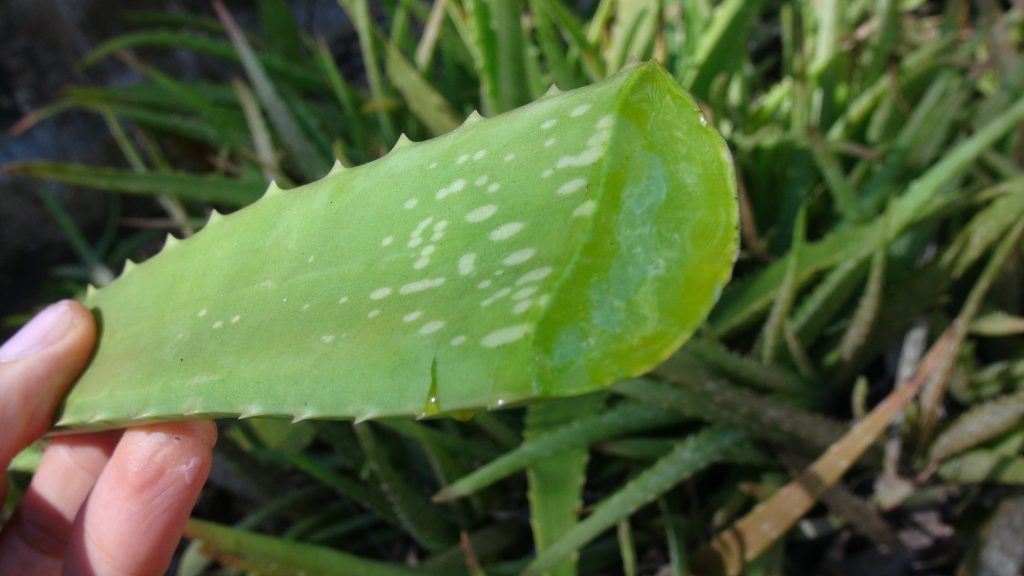
Plant Components and Uses
The leaf of the aloe is made up of three layers. The outer protective layer is known as the rind. The middle layer contains latex within the bitter yellow sap, and finally, the inner layer contains an odorless and clear mucilaginous gel.
The original use of the aloe plant was in the production of aloin, found in the yellow sap (latex) just beneath the outer skin of the leaf. This part of the plant is a bowel irritant and may cause a strong laxative effect. It was used for many years as a laxative ingredient by the pharmaceutical industry.
It is best to avoid the intake of aloin if ingesting, as it is considered toxic, especially for children, pregnant and nursing mothers, or women on their period. It is the mucilaginous gel that contains most of the bioactive components of aloe. This gel is clear, colorless, and semisolid. Products on the market contain either the gel or both the gel and the latex together. Aloe is an active ingredient in hundreds of skin lotions, sunblock, soaps, shaving creams, shampoos, and cosmetics. It is largely promoted as a moisturizer and anti-irritant. It’s also used in yogurt, beverages, and some desserts.
The Aloe Vera Plant
The Aloe genus is large and diverse, containing over 500 types of Aloe plants. It belongs to the plant family Asphodelaceae. The name derives from the Arabic word ‘Alloeh’ meaning ‘shining bitter substance,’ while the word ‘vera’ in Latin means ‘true’.
Aloe originated in the tropical climate of Africa, and cultivation continues in other parts of the world, including Asia, Europe, and America with similar climates.
Appearances vary greatly from species to species, but most have thick, fleshy leaves arranged in a rosette pattern. Flowers are often tubular in shape and yellow, orange, pink, or red. They can range from small ground-hugging species to those the size of small trees!
Aloe vera, or Aloe barbadensis Miller, is one of the best-known types of Aloe Vera because it carries medicinal benefits for your skin and is also edible. Other types of aloes that can be consumed include Aloe arborescens and Aloe ferox. It is widely distributed and is considered an invasive species in many world regions. 3
Aloe plants are flowering succulents. All succulent plants have self-repairing abilities. The internal gel repairs any cut or tear by automatically shrinking the wound and creating a new water-tight seal.
Its natural ability to heal a nick or scrape on its own flesh demonstrates its antibacterial, antiviral, and antifungal properties in action. If it wasn’t, the wound would become infected with bacteria and spread to the rest of the plant. 4
When it rains, succulents swell to 130% above their usual size as they absorb water through their leaves into their inner gel matrix. They grow in hot and humid, high rainfall conditions and are highly resistant to drought. They can easily live without water for 2-3 months after a good watering session.
They grow in all types of soil, but a well-drained and organic-rich soil is preferred. They grow well in indirect sunlight and are sensitive to soggy conditions and stagnant water, which can result in the plant’s demise by rot. If your Aloe Vera plant is turning yellow, this indicates underwatering. If the leaves are soggy and soft, you are overwatering the Aloe.
An outdoor Aloe vera plant can survive for over two decades. Aloe Veras thrive well outdoors all year round in warm regions. In cooler regions, they grow best indoors, protected from the cold. They thrive in temperatures between 55 and 80 degrees Fahrenheit.
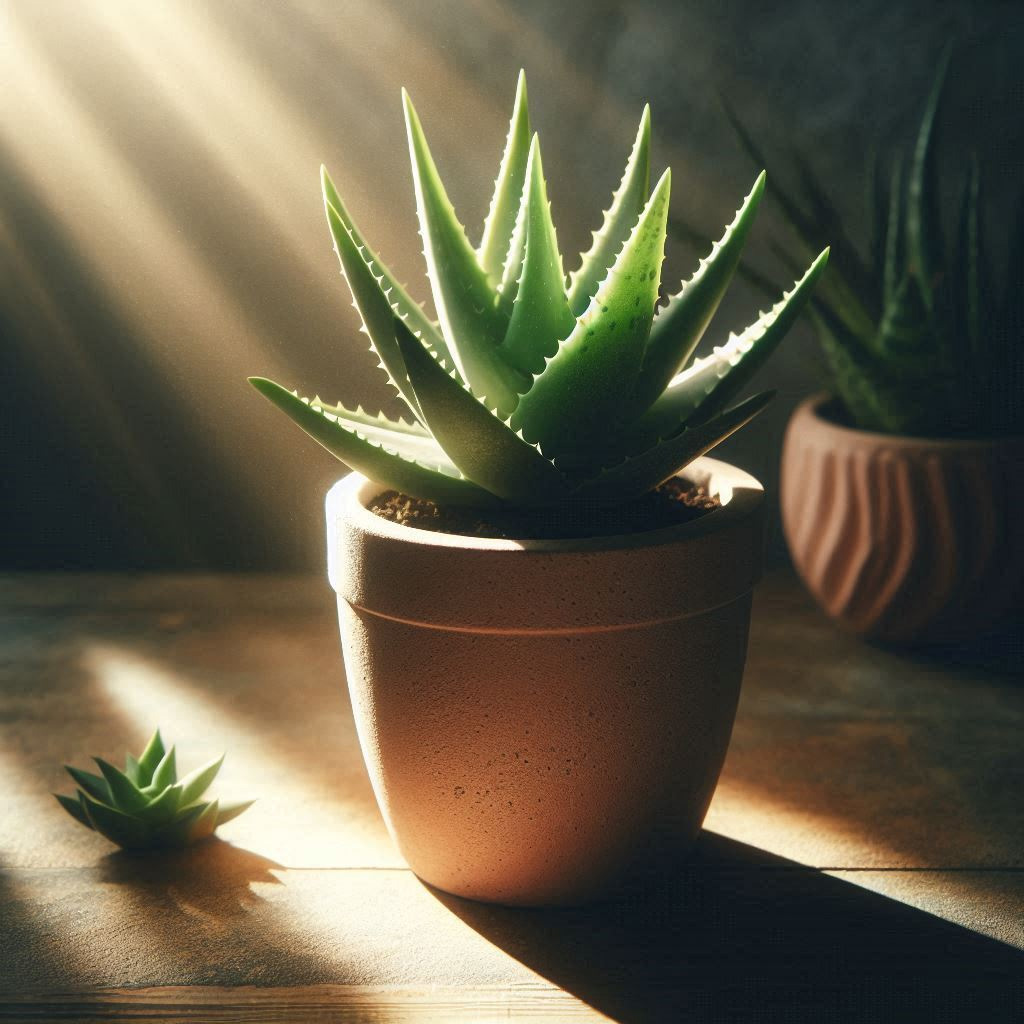
Aloe Vera Health Benefits
Here is a list of just some of the health benefits of aloe vera for chronic and other illnesses:
- Liver Diseases: Detoxifies and repairs the liver from oxidative damage. Consumption of aloe before alcohol helps to protect the liver.
- Tumors, Breast, and Cervical Cancer: Aloe may be an effective anti-tumor agent that increases the therapeutic potential of conventional drugs to inhibit cancer growth.
- Candidiasis and Vaginal Yeast Infections: Aloe contains natural anti-fungal properties and has been shown to inhibit the growth of Candida albicans. 6
- Diabetes: Aloe helps to lower elevated blood glucose levels, homeostasis, and lipid metabolism. Pre-clinical and clinical trials showed successful results when animals and humans with diabetes took aloe vera for their condition. 7
Cholesterol: Aloe vera may also aid in protecting the body from high levels of cholesterol and other fats that can lead to cardiovascular diseases. - E. Coli and Staph Infections: Helps to eliminate E. Coli from the gut.
- Epilepsy: Shows promise as an anticonvulsant and antioxidant.
- Gastroesophageal Reflux Disease and Peptic Ulcers: Helps to reduce uncomfortable symptoms. Lessens gastric acid output and reduces pain and heartburn.
- Genital Herpes: Helps alleviate symptoms.
- Gingivitis, Tooth Decay, and Cavities: Shown to reduce plaque and improve symptoms of gingivitis. Aloe has been shown to reduce bad bacteria in the mouth, which causes cavities, tooth decay, and gum disease. It also protects the mouth from oral infections and promotes a healthy mouth and strong teeth. 8
- Arthritis: Reduces inflammation when applied topically.
- Bowel Diseases including Ulcerative Colitis and Bowel Cancer: Aids in healing and lubricates the digestive tract.
- Constipation: Promotes regular bowel movements.
- Anal Fissures: Aids in wound and tissue healing, reduces symptoms.
- Shingles: Helps to limit the spread, encourages healing, and reduces swelling, pain, and itching.
- Depression: Shows promise in lifting depression symptoms.
- Flu: Lessens the severity and duration of the illness.
- Weight-loss: Enhances weight loss with minimal effort.
Information gathered from Source 2 and 9

Here are some other uses and applications of Aloe for topical use:
- Bruises: Applying aloe can help to reduce pain, inflammation, tenderness, and increase circulation, accelerating healing.
- Diaper Rash: Improves the severity and size of the rash.
- Eczema, Psoriasis, and Erythema: Used as a safe alternative to cortisone-like medications.
- Frostbite: More effective for tissue survival than other drugs.
- Hangover: Speeds the sobering process.
- Jalapeno Burns: The anti-inflammatory properties of aloe soothe burned skin and aid in pain relief.
- Jellyfish Stings: Reduces inflammation, speeds healing of damaged tissue, and reduces the risk of infection.
- Leg Ulcers: Applied to dressings, it reduces bacteria and aids in wound healing.
- Skin Burns and Sunburn: Its antibacterial and anti-inflammatory compounds help to prevent infection, reduce redness and swelling, and speed the healing process.
- Tooth Extraction: Speeds the healing process, controls pain and avoids infection.
- Dandruff: Lessens the itch and gently relieves symptoms without the unwanted side effects of some shampoos.
- Dark Underarms: Aids in lightening and restoring natural skin color.
- Stretch Marks: Heals damaged skin and restores elasticity.
- Acne: Promotes clear and healthy skin.
- Warts: Antiviral compounds help to eliminate warts.
For Anti-Aging
Aloe helps to keep skin hydrated, supple, and fresh, and stimulates collagen and elastin production. It also helps to tighten pores and minimize wrinkles. Additionally, it helps to reduce saggy, loose, and dark skin around the eyes.

Moisturize Hair
Aloe helps to boost moisture and add softness, especially after dyeing hair with henna or commercial dyes.
It is also said to calm an itchy scalp, deep cleans oily hair, strengthens and repairs hair strands and may promote hair growth. 12
Information gathered from Source 9

When Not to Ingest Aloe
People who are allergic to plants in the lily family, such as onions, garlic, and tulips, should avoid aloe. Prolonged use may result in watery diarrhea, leading to electrolyte imbalance and potassium depletion. This is usually induced by the intake of whole-leaf aloe vera extract and aloe latex, not commonly by the gel. Problems generally occur when aloe is overused. Aloe may cause lowered blood sugar levels, caution should be taken by diabetics, especially if taking drugs or insulin. Because of aloe’s blood-thinning properties, people who suffer from blood disorders, heart disease, or take blood-thinning medication should also be cautious or avoid it altogether.2, 10, 11
Conclusion
Aloe is a powerful medicinal plant that has been used for centuries throughout the world and across various cultures for both internal and external use. It is packed with an array of health-boosting compounds, including vitamins, minerals, enzymes, and essential and non-essential amino acids, to name a few. With its rich blend of nutrients, aloe vera continues to be a trusted natural remedy for promoting overall health and wellness.
References:
- The Ancient ‘Plant of Immortality’ That Treats Over 50 Medical Conditions | Ancient Origins (ancient-origins.net)
- Source: Kumar, S., & Yadav, J.P. 2014. Ethnobotanical and pharmacological properties of Aloe vera: A review. Journal of Medicinal Plant Research, Department of Genetics, M.D. University, Rohtak-124001, Haryana, India, Page 1389, 1390, 1395.
- 21 Types of Aloe Plants: Identification and Care Tips (thespruce.com)
- Adams, M. (2007). The Aloe Vera Miracle. Truth Publishing, Page 2.
- How Long Do Aloe Plants Live Healthy (Aloe Lifespan) – EmbraceGardening
- [PDF] The efficacy of crude extract of Aloe secundiflora on Candida albicans. | Semantic Scholar
- Aloe vera in diabetic dyslipidemia: Improving blood glucose and lipoprotein levels in pre-clinical and clinical studies – PMC (nih.gov)
- Karim B, Bhaskar DJ, Agali C, Gupta D, Gupta RK, Jain A, Kanwar A. Effect of Aloe vera mouthwash on periodontal health: triple blind randomized control trial. Oral Health Dent Manag. 2014 Mar;13(1):14-9. PMID: 24603910.
- Branson, S. (2020). 101 Amazing Uses for Aloe Vera. Familius, Pages 1-86.
- Does Aloe Vera Cure Yeast Infection? – Beat Candida
- Benefits, Uses, and Safety of Aloe Vera (verywellhealth.com)
- Aloe Vera for Hair: Benefits for Hair Growth (healthline.com)
Want to learn how to make your own raw gel at home useful for many applications? Go to Love Your Skin: Homemade Aloe Vera and Colloidal Silver Gel

